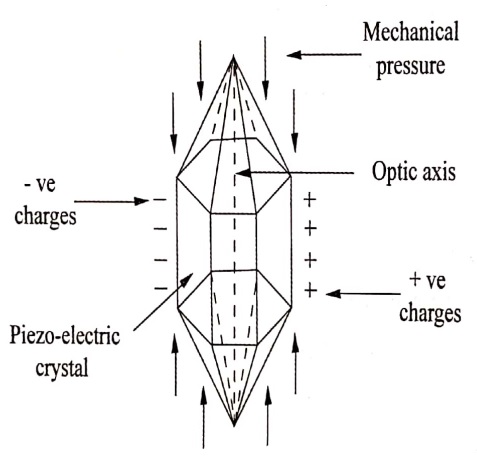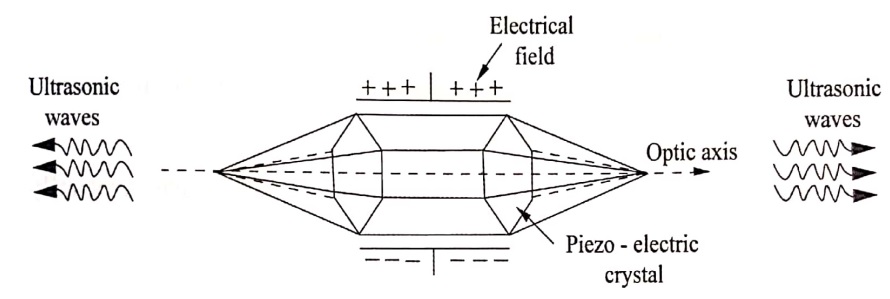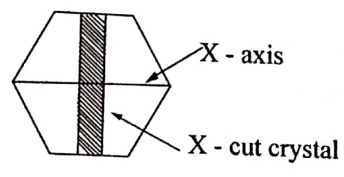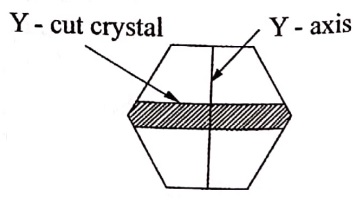Piezo – electro effect

The piezo- electric effect was discovered by Paul Jean curie and Pierre curie in 1880.
Inverse piezo – electric effect
The piezo – electric effect is reversible. When electric field is applied on the opposite faces of the quartz crystal, alternative mechanical deformation (expansion or contraction) is produced across the other pair of opposite faces of the crystal. This effect is called inverse piezo – electric effect. This is also called as electrostriction.
This effect is used for generating ultrasonic waves using piezo – electric oscillator. Ultrasonic waves which are produced by the piezo – electric method is more efficient than magnetostriction oscillator method.

Piezo – electric crystals
The crystals which produce piezo-electric effect are termed as piezo – electric crystals.
Example: Quartz, tourmaline, Rochelle salt and Zinc blend.

- Natural quartz crystal has a hexagonal structure with a pyramid attached to each end.
- The line joining the end points of the pyramid is called z-axis (or) optic axis.
- The line passing through the opposite corners of the hexagon is called x-axis or electrical axis.
- The lines passing through the opposite sides of the hexagon is called y-axis or mechanical axis.
- In quartz crystal, all the three axis (x, y, z) are mutually perpendicular to each other.
X-cut crystal

Y- cut crystal

Fig. 1.5 Y – cut crystals
| Read More Topics |
| Magnetostriction oscillator method |
| Ultrasonic testing methods |
| Black body radiation experiment |





